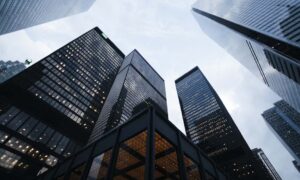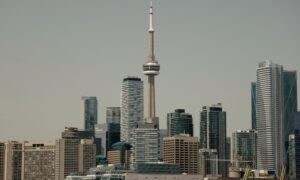India’s real estate landscape is undergoing a major transformation, spurred by the pressing need to combat climate change and build sustainable communities. Green construction methods are crucial to this progress, as they are innovative solutions aimed to reduce environmental impact while improving occupant quality of life. These practices are more than just fads; they represent the future of real estate by merging environmental conscience with cutting-edge technology.
Why Sustainability Matters in Real Estate?
Building construction contributes for roughly 40% of worldwide carbon emissions, making the real estate industry an important factor in mitigating climate change. Traditional construction methods and materials frequently deplete natural resources and generate substantial waste. Sustainable real estate development, on the other hand, emphasizes lowering environmental footprints, increasing energy efficiency, and harnessing renewable resources. Apart from environmental benefits, green buildings have economic benefits such as decreased energy costs, higher property values, and increased tenant satisfaction.
The demand for green buildings across the top Indian cities has significantly increased in the last few years. Today, homebuyers, especially the millennials, are looking for investing in such projects for the obvious reasons they possess. Apartments that are offering proper ventilation, access to fresh water and ample sunlight are gaining popularity among the modern homebuyers.
Key Innovations in Green Building Practices
Energy-Efficient Designs: Modern green buildings use energy-efficient designs to maximize natural light, ventilation, and insulation. Solar panels, high-performance windows, and energy-efficient HVAC systems significantly cut energy use. Passive design solutions, which use the building’s orientation and materials to manage temperature, are becoming more popular for reducing dependency on artificial heating and cooling.
Smart Building Technology: The use of smart technologies is transforming sustainable real estate. Smart thermostats, controlled lighting systems, and IoT-enabled energy monitoring tools enable property owners to track and cut their energy consumption in real time. These technologies not only increase energy efficiency, but also provide residents more control over their surroundings.
Green Roofing and Vertical Gardens: Rooftop gardens and green walls are not only aesthetically pleasing, but also functional. They improve air quality, add insulation, and lessen the urban heat island effect. Green roofs also serve as natural stormwater management systems, absorbing rainwater and reducing runoff. Vertical gardens are a sustainable approach to introduce greenery into urban houses with limited space.
Sustainable Building Materials: The switch to eco-friendly materials is a key component of green building methods. Recycled steel, bamboo, recovered wood, and low-emission concrete are gradually replacing traditional materials. These sustainable approaches limit resource exploitation and construction waste. Furthermore, developments such as self-healing concrete and biodegradable insulation are advancing the field of sustainable construction.
Water Conservation Systems: Green buildings include water-saving features including low-flow fixtures, rainwater harvesting systems, and greywater recycling. These solutions promote effective water use while tackling the growing global water shortage. Drought-prone areas require such strategies to ensure long-term sustainability.
Net-Zero and Carbon-Neutral Buildings: Net-zero energy buildings, which generate as much energy as they consume, are setting a new standard for sustainability. These buildings achieve an environmental balance by combining renewable energy sources such as solar and wind with energy-efficient technologies. Carbon-neutral buildings go one step further, offsetting any leftover emissions with methods such as carbon credits or on-site carbon capture devices.
Benefits for Stakeholders
Sustainable real estate development is not only an environmental need, but also a smart business decision. Green buildings provide investors larger returns due to increased demand and lower operating expenses. Tenants benefit from better indoor surroundings, which have been linked to higher productivity and well-being. Furthermore, governments around the world are providing incentives such as tax credits and grants to encourage environmentally friendly real estate activities.
Challenges and the Way Forward
While the advantages of green building methods are obvious, problems remain. The initial expenses of sustainable construction can be prohibitive for developers, particularly in emerging economies. Furthermore, the lack of uniform standards and certifications across nations hampers the implementation of these procedures.
However, increasing awareness of environmental issues, combined with technological improvements, is gradually tackling these challenges. Collaborations among governments, private businesses, and non-profit organizations are driving innovation and making sustainable real estate more accessible.
Future of Green Real Estate
Sustainable real estate development is more than a responsibility; it’s an opportunity to rethink how we live, work, and construct. Innovations in green building methods are paving the path for a future in which environmental stewardship and economic growth coexist. As the globe grapples with the consequences of climate change, the real estate industry has the power—and the obligation—to lead the drive toward a more sustainable future.
By embracing these green practices, we can design structures that not only withstand the test of time but also benefit the world and its inhabitants. If you are also looking for a premium office space for rent in Delhi, built with eco-friendly materials and having zero carbon emissions, Hub and Oak can help you find one. They are one of the best real estate consultants in Delhi, providing ideal office spaces in Delhi to all kinds of business professionals and corporates.



































